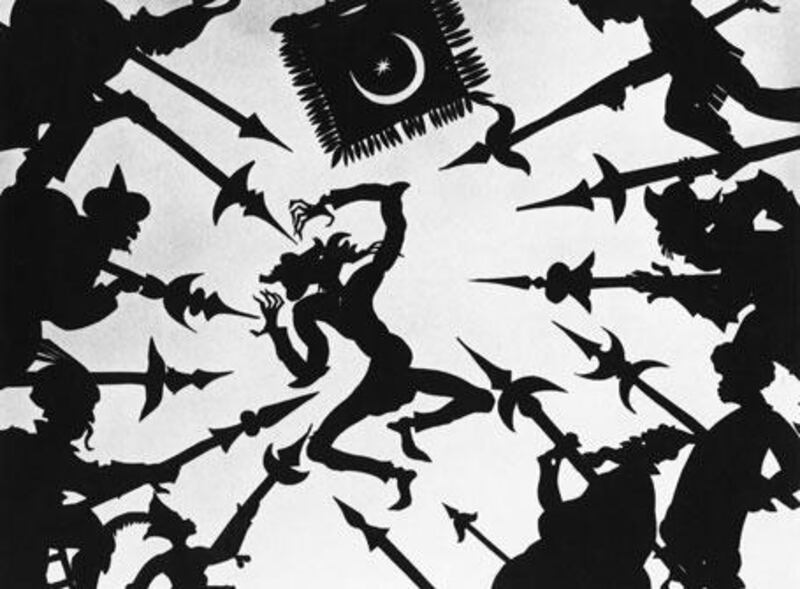Made in 1926, The Adventures of Prince Achmed, screening this week as part of the Abu Dhabi Festival, is the oldest known surviving animated feature film. It was made a full decade before what is often described as the first animated feature film, Disney's Snow White and the Seven Dwarfs. The remarkable director Lotte Reiniger pioneered the silhouette method, in which blacked figures, which look as though they have been made from cardboard, are placed on coloured backgrounds to create a Chinese lantern effect. Every frame, painstakingly put together by hand, is designed to reflect Arabesque art in its symmetry, especially in the buildings.
The German director, born in 1899, fell in love with the work of George Melies as a teenager and the influence of his fantasy work in films such as The Palace of a Thousand and One Nights (1905), about a sultan trying to win the hand of the woman he loves, can be seen here. Reiniger pays homage to Melies's sequence in which the sultan passes through layer after layer of foliage before reaching the stairs of the palace. After Achmed falls in love with Princess Pari Banou on the island of Waq-Waq, he takes her from an enchanted lake and through a forest before coming to a flight of stairs where he asks her to marry him.
This inventiveness of design can be seen from the second the main characters - Prince Achmed, Pari Banou, the Sorcerer, the Caliph, the Witch and Dinarsade - are introduced in a colourful title sequence. Reiniger's use of colour to represent mood and time is striking during the five acts, from the bright yellow of the caliph's city party to the reds that surround the witch on the mountain, and some of her colour choices feel as effective and emotive as the canvases of artists such as Kandinsky.
The story is a collage of moments taken from the 1,001 Arabian Nights. The adventure begins with a blue sequence demonstrating the power of the sorcerer as he seems to conjure animals out of thin air. One of them is a magic horse that enchants the wealthy caliph, who offers any treasure in exchange for it, but balks when the sorcerer asks for the hand of his daughter Dinarsade. Her brother, Achmed, steps in, but is tricked into flying off into the distance, unable to control the horse.
In the next act, Achmed rejects a number of maidens before falling for Pari Banou, only to have the sorcerer whisk her from his grasp and take her to China as an offering to the emperor. Just as all seems lost, the prince meets Aladdin, who, after falling in love with Dinarsade, has also been duped by the sorcerer. It is remarkable how modern the film feels, with its emphasis on action and global narrative. The story moves along at a fair clip, although the version available today is not the full original but one struck from a nitrate print found in Britain in 1999. Great pains were taken to restore the colour scheme.
It's another element in the remarkable story of the movie's production. In addition to making short films in the 1920s, Reiniger worked as a teacher to the children of a banker, Louis Hagen. As insurance against the spiralling inflation of the period, Hagen brought a large quantity of raw film stock and commissioned Reinger to make a film. Reiniger's involvement in left-wing politics would result in the director's being forced to flee Germany in 1933. Moving from country to country, she still made animated films, but returned to Berlin during the war to care for her sick mother.
In 1950 she settled in London where she made advertising films for the General Post Office. The influence of the silhouette technique used in Prince Achmed can still be seen today in the work of Michel Ocelot and sequences in productions such as 300 and Sin City. The Adventures of Prince Achmed is showing on Friday from 7:30pm at the Abu Dhabi Theatre - Breakwater (across from Marina Mall). Presented by Abu Dhabi"s Oumsiyat and The Cross Culture Group, the screening is accompanied by live music from Trio Khoury and the Perrick Quintet. See www.abudhabifestival.ae.











